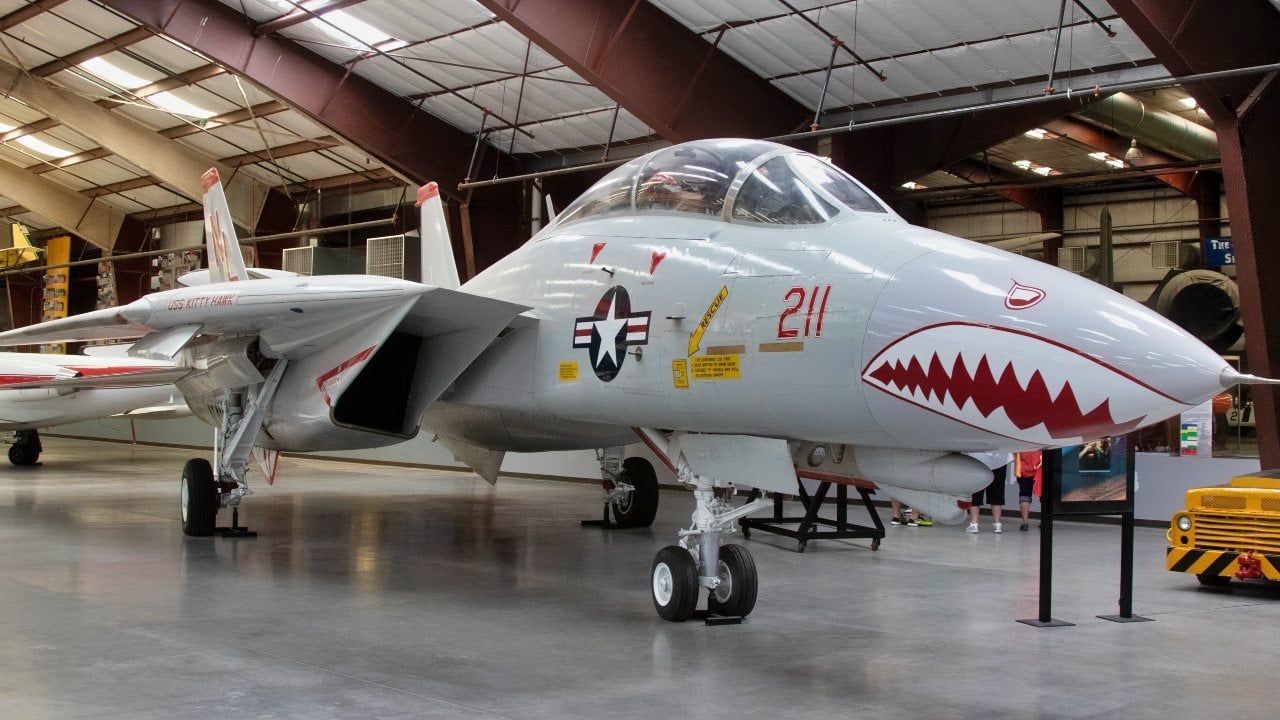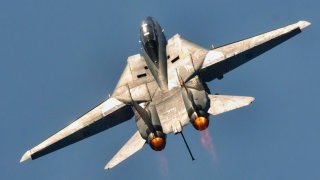AIM-54 Phoenix: The Missile That Made the F-14 Tomcat an 'Aerial Assassin'
The AIM-54 Phoenix was a renowned long-range air-to-air missile used by the U.S. Navy from 1974 until 2004, notably carried by the F-14 Tomcat fighter jet. Originally designed for the canceled F-111B Aardvark project, the missile became an integral part of the F-14's arsenal.
What You Need to Know: The AIM-54 Phoenix was a renowned long-range air-to-air missile used by the U.S. Navy from 1974 until 2004, notably carried by the F-14 Tomcat fighter jet. Originally designed for the canceled F-111B Aardvark project, the missile became an integral part of the F-14's arsenal.

-Capable of reaching speeds up to Mach 5 and engaging targets over 100 nautical miles away, the AIM-54 could be launched in clusters of six, making it a formidable weapon during its time.
-Despite its heavy weight and high cost—each missile costing around $500,000—the AIM-54 remained a key component of naval air superiority until it was retired in favor of newer technologies like the AIM-120 AMRAAM.
AIM-54 Phoenix: The US Navy's Former Long-Range Air-to-Air Missile
Much emphasis is placed on the lethal characteristics of modern fighters. But a fighter is really only the delivery system for the weaponry, which, in and of itself is the truly lethal component of the fighter platform. Accordingly, a fighter is only as good as the weapons it carries.
One renowned weaponry that the US Navy formerly used, and the Iranian Air Force currently uses, is the AIM-54 Phoenix. The AIM-54, launched from the F-14 Tomcat, is a beyond visual range (BVR) air-to-air missile that was first produced in 1966 and incorporated a semi-active radar homing and terminal phase active radar homing guidance system, making the AIM-54 “smart.”
Introducing the AIM-54 Phoenix Missile
The AIM-54 was carried on the F-14’s external pylon, in clusters of six, and could be launched against other aircraft. With a top speed of Mach five, or 5,600 feet per second, the AIM-54 closed on its targets fast.
But despite being launched exclusively from the F-14, the AIM-54 project was designed for the F-111B Aardvark, which was to be the US Navy’s carrier-capable variant of the Air Force’s F-111A. The F-111B was ultimately cancelled. But the F-111 would serve as a long-range interdictor with a distinctive feature: the swept wings that would also be found on the F-14.
The F-111B was canceled but the platform’s BVR missile system lived on and was transferred over to the Navy’s fighter development program, then known as the VFX, which would become the venerable F-14 Tomcat.
The finished AIM-54 was a capable weapon. Up to six could be launched simultaneously in any weather condition, making the AIM-54 versatile and reliable. The missile was operated with an “ejection launch,” by which a pyrotechnic charge jettisons the missile from an external launch system beneath the F-14 before the AIM-54’s solid propellant rocket motor engine ignited. The AIM-54 was a heavy weapon.

A cluster of six AIM-54s weighed over four tons. Because of the stringent weight restrictions for carrier landings, the F-14 could not land with a full load of six AIM-54s. So, in some cases, the AIM-54 would need to be fired simply to reduce the F-14s weight before landing.
In case you were wondering, each AIM-54 cost about half a million dollars.
The actual range of the AIM-54 was classified but was over 100 nautical miles. The missile measured thirteen feet long with a diameter of fifteen inches and a wingspan of three feet. The warhead weighed 135 pounds and detonated with a proximity fuse, which detonated when the AIM-54 would get within a set distance to a target.
The AIM-54 served faithfully with the Navy from 1974 until 2004 before finally being retired in favor of updated missiles like the AIM-120 AMRAAM.
About the Author: Harrison Kass
Harrison Kass is a defense and national security writer with over 1,000 total pieces on issues involving global affairs. An attorney, pilot, guitarist, and minor pro hockey player, Harrison joined the US Air Force as a Pilot Trainee but was medically discharged. Harrison holds a BA from Lake Forest College, a JD from the University of Oregon, and an MA from New York University. Harrison listens to Dokken.
Image Credit: Creative Commons and/or Shutterstock.


